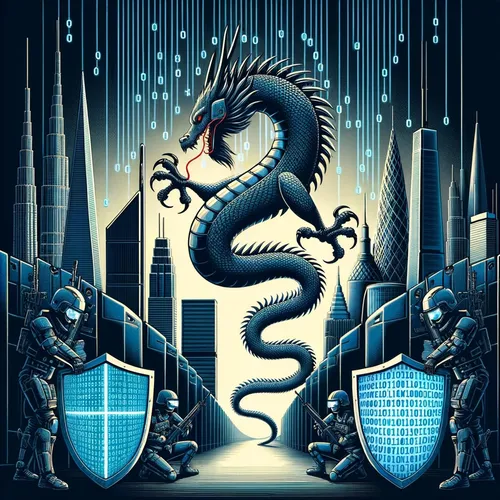Salt Typhoon's Cyber Smackdown: Beijing's Spicy Router Raids Leave US Sizzling
- Author
- Quiet. Please
- Published
- Mon 01 Sep 2025
- Episode Link
- https://www.spreaker.com/episode/salt-typhoon-s-cyber-smackdown-beijing-s-spicy-router-raids-leave-us-sizzling--67583972
This is your Dragon's Code: America Under Cyber Siege podcast.
Alright listeners, Ting here—your favorite cyber sleuth with just the right mix of VPN and spicy hotpot. Let’s get right to it: the past few days have been a master class in digital drama, with Chinese hacker group Salt Typhoon running the country’s equivalent of a cyber hurricane across the U.S. infrastructure—powered by none other than Beijing’s own intelligence apparatus, according to joint reports from the National Security Agency, FBI, and pretty much every Western cyber agency that owns a suit.
Salt Typhoon’s latest campaign isn’t just a rerun of last year’s telco snooping—they took things full Bond villain by zeroing in on America’s backbone routers, provider edge, and even customer edge routers. They wormed in through security vulnerabilities, often in edge devices like routers and switches, and once inside, let’s just say they didn’t pack lightly. According to Brett Leatherman at the FBI Cyber Division, their tactics allowed real-time interception of calls, texts, and even the geo-location of millions of subscribers. Major victims reportedly include AT&T, T-Mobile, and Verizon, and—brace yourselves—these intrusions may have compromised communications linked to recent presidential candidates.
Salt Typhoon isn’t acting alone. They farmed out tech support to Chinese contractors like Sichuan Juxinhe Network Technology and Beijing Huanyu Tianqiong Information Technology—firms named and shamed in Treasury sanctions earlier this year. Microsoft even took the rare step of shifting Pentagon cloud contracts away from Chinese engineers—a gutsy move, but necessary when dealing with adversaries known for persistent, state-aligned espionage.
How do we know Beijing is pulling the strings? Not only is the scale breathtaking—over 80 countries hit and 200-plus U.S. companies breached—but the tradecraft screams government work. These hackers didn’t just smash and grab; they installed digital trapdoors and altered router OS code to build a long-term base, capable of future sabotage. Allied intelligence from the UK, Germany, Japan, and nearly a dozen more agencies back up the attribution, emphasizing just how united—and worried—the West is.
Big cyber advisory meetings, like the one chaired this week by Oh Hyun-joo in Korea’s National Security Office, focused on shoring up defenses against AI-driven threats and tightening public-private partnerships. U.S. agencies pushed out urgent bulletins advocating basic hygiene—patch those routers, activate multi-factor, and log every suspicious blip. But here’s the rub: experts like Annie Fixler at the Foundation for Defense of Democracies warn that chasing Salt Typhoon off your network is like trying to shake glitter out of a carpet. Their persistence and lateral movement skills mean they’re often already in deeper than you think.
What have we learned? First, infrastructure must be monitored and micro-segmented. Second, foreign dependencies—even at the engineer level—have become risks too great to ignore. And third, joint intelligence operations are now the only way to keep up; no single agency can track state-sponsored operations of this scale alone.
That’s all for this week on Dragon’s Code: America Under Cyber Siege. You survived the siege with me, Ting. Thanks for tuning in, don’t forget to subscribe for the next zero-day drop.
This has been a quiet please production, for more check out quiet please dot ai.
For more http://www.quietplease.ai
Get the best deals https://amzn.to/3ODvOta
